A TravelMag survey of UK travel experts has revealed the ten most charming towns in the East Midlands. We invited 100 travel writers, photographers and selected professionals to name the towns they consider the most appealing. Those surveyed were asked to name their three favourites – with populations between 3,000 and 50,000 – before we totted up the results to produce the final ten.
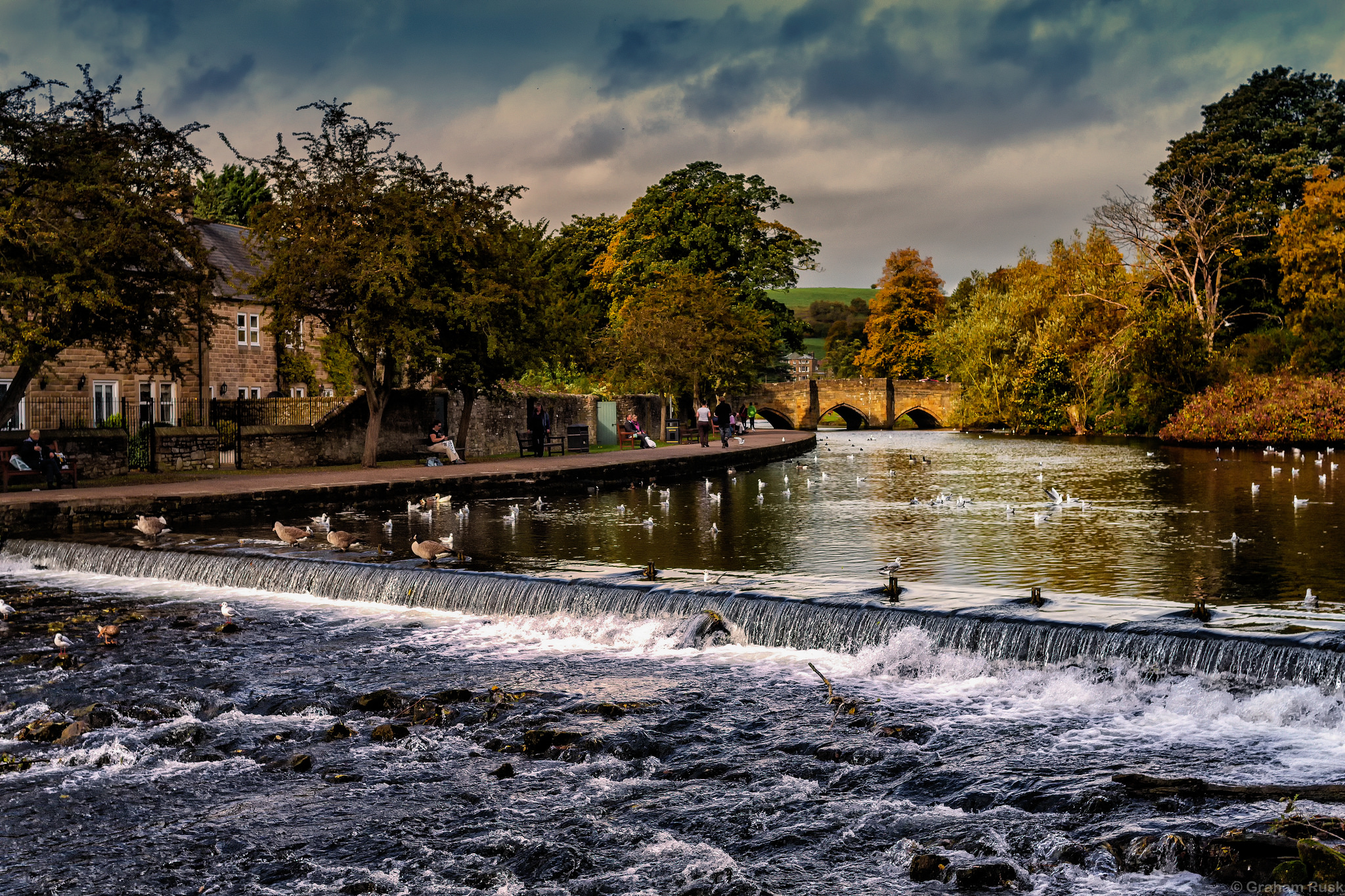
The River Wye flows through an East Midlands town (Photo: 77GR via Flickr)
So what do we know about this popular region nestled in central England? Extending out to the country’s eastern coastline, the East Midlands is a hotchpotch of natural beauty and man-made remnants of Britain’s ancient past. From the chalky Chiltern Hills to the famous Peak District. it is particularly popular with ramblers who enjoy its low-lying undulations – and indeed anyone who loves the great outdoors.
But it is in the region’s ancient towns that you gain a sense of the social history that runs so deep here. Its market and spa towns are dotted with well-preserved architecture dating back centuries and artisanal trades such as leather, lace and shoe-making are still present today. As are the rich, peaty fens that have made the region one of England’s most important arable farming lands.
Such a melting pot has given rise to what are considered some of Britain’s most appealing towns. And without further adieu, we give you ten of the best, listed in alphabetical order.
Bakewell
The only market town within the Peak District National Park boundary, Bakewell’s scenic setting on the River Wye in Derbyshire, along with its sprinkling of attractive courtyards and independent shops and cafés, helps ensure a place in our top ten.
Bakewell is perhaps best known as the birthplace of the Bakewell Pudding, though few are aware of the curious story behind its conception. In the 19th century, a local cook was baking a jam tart but misunderstood the recipe and inadvertently created a brand new confectionary – one that is sampled by most visitors to the town.
They also spare time to visit the town’s impressive architecture, evident in the fine spire of All Saints Church as well as the grand old houses of Market Hall, The Old Town Hall and the Almshouses on South Church Street. Other places of interest include the ancient five arched bridge, often used as a public canvas by local artists.
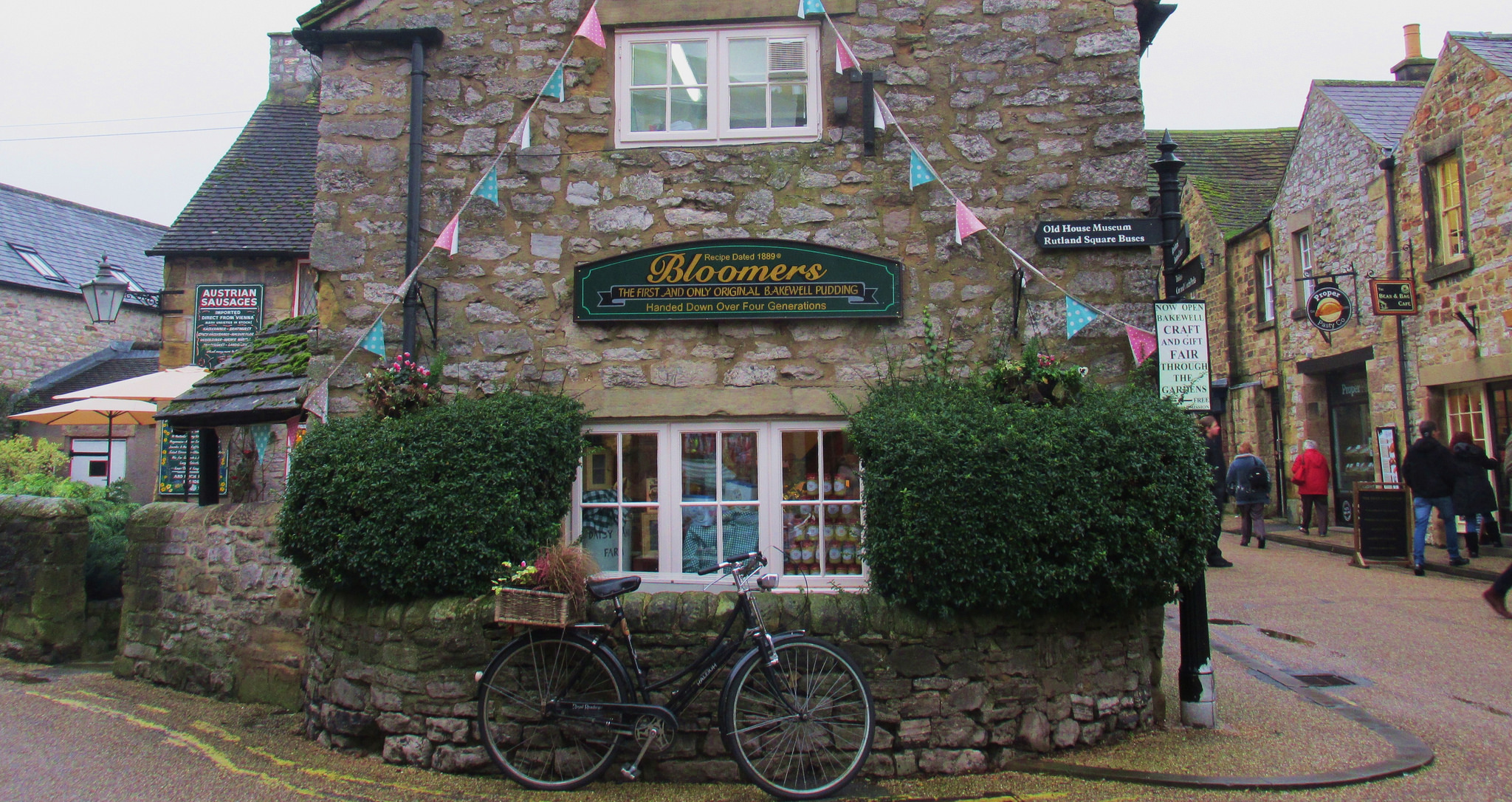
The pretty exterior of a Bakewell Pudding shop (Photo: wainwright warrior via Flickr)
Brackley
Situated in the southwest corner of Northamptonshire, the historic market town of Brackley is a popular stop-off with visitors to the East Midlands and an ideal base for exploring the nearby Cotswolds, with its rolling hills, thatched medieval villages and stately homes.
But Brackley has plenty of its own appeal too, owing in large part to its sweeping High Street, 18th century town hall and attractive piazza. It also knows how to draw a crowd, with regular annual festivals as well as a monthly farmer’s market transforming an otherwise laid-back town into a hubbub of activity.
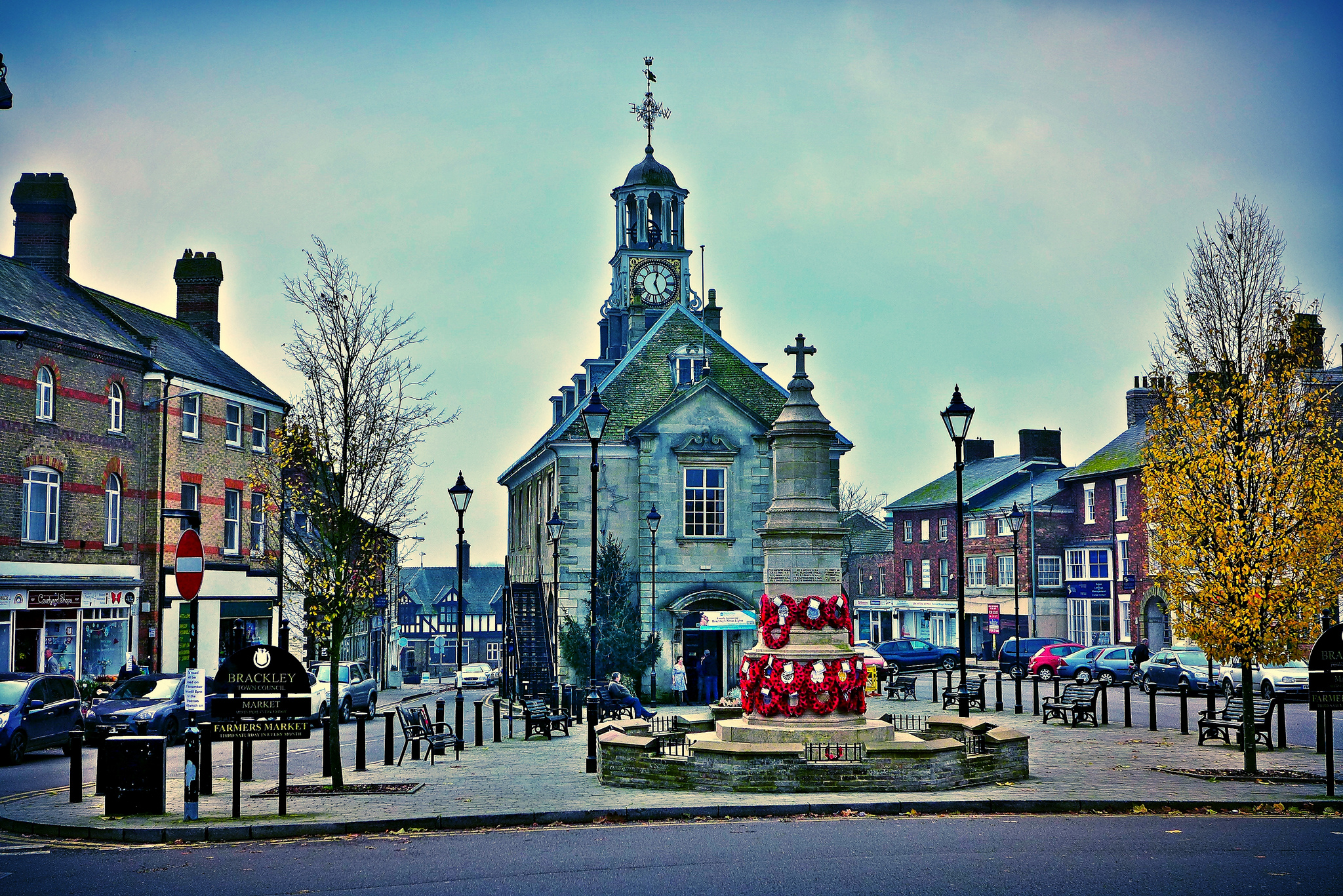
A view of Brackley’s Town Hall and War Memorial (Photo: Michael via Flickr)
Buxton
Just 11 miles west of Bakewell in Derbyshire, Buxton lays claim to the honour of being the highest town of its size in England, sitting 300 metres above sea level. Historically a spa town, its natural spring water baths remain a key attraction – and a major source of income – to this day.
The town boasts some of the region’s finest examples of Georgian architecture, and is also home to an impressive 23 acres of ornamental gardens featuring serpentine walkways, children’s play areas, lakes and a miniature railway. Other attractions include a much-admired Opera House which plays host to one of Britain’s largest opera-based annual festivals.
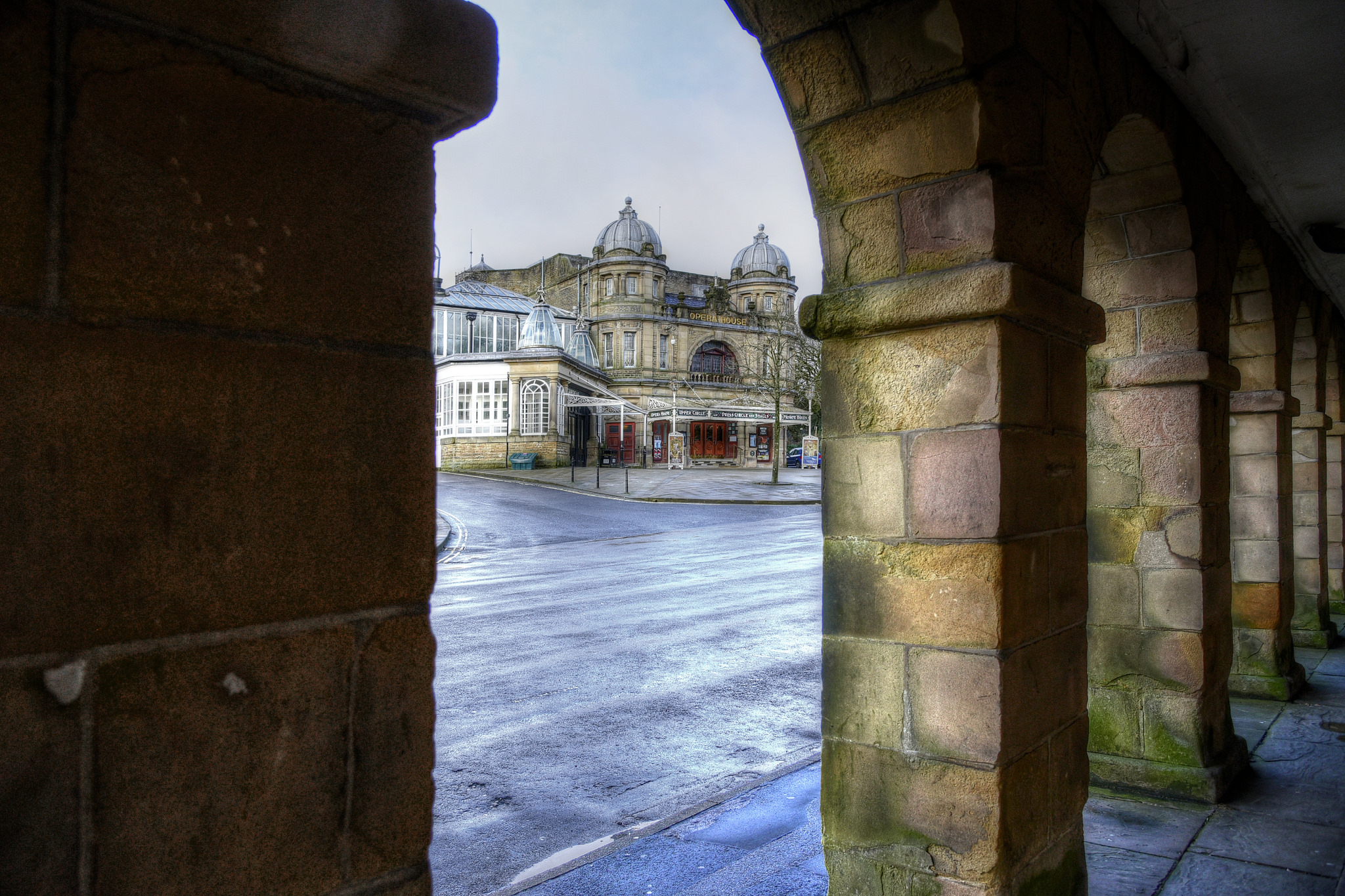
A view of Buxton Opera House from behind the arches on The Square (Photo: Simon Harrod via Flickr)
Long Sutton
Sitting in the south Lincolnshire Fens, the market town of Long Sutton has been named among the best-kept villages in the region – and for good reason. Through spring and summer, floral displays adorn the streets and buildings in and around the Market Place and in the High Street, creating a visual feast for visitors and locals alike.
The town is also home to numerous examples of fine Georgian architecture as well as St Mary’s Church and its lead-covered timber spire, thought to be the highest, oldest and best-preserved lead spire in England and possibly Europe. Other places of interest include a Masonic lodge, while a Civic Society plays an active role in preserving local landmarks.
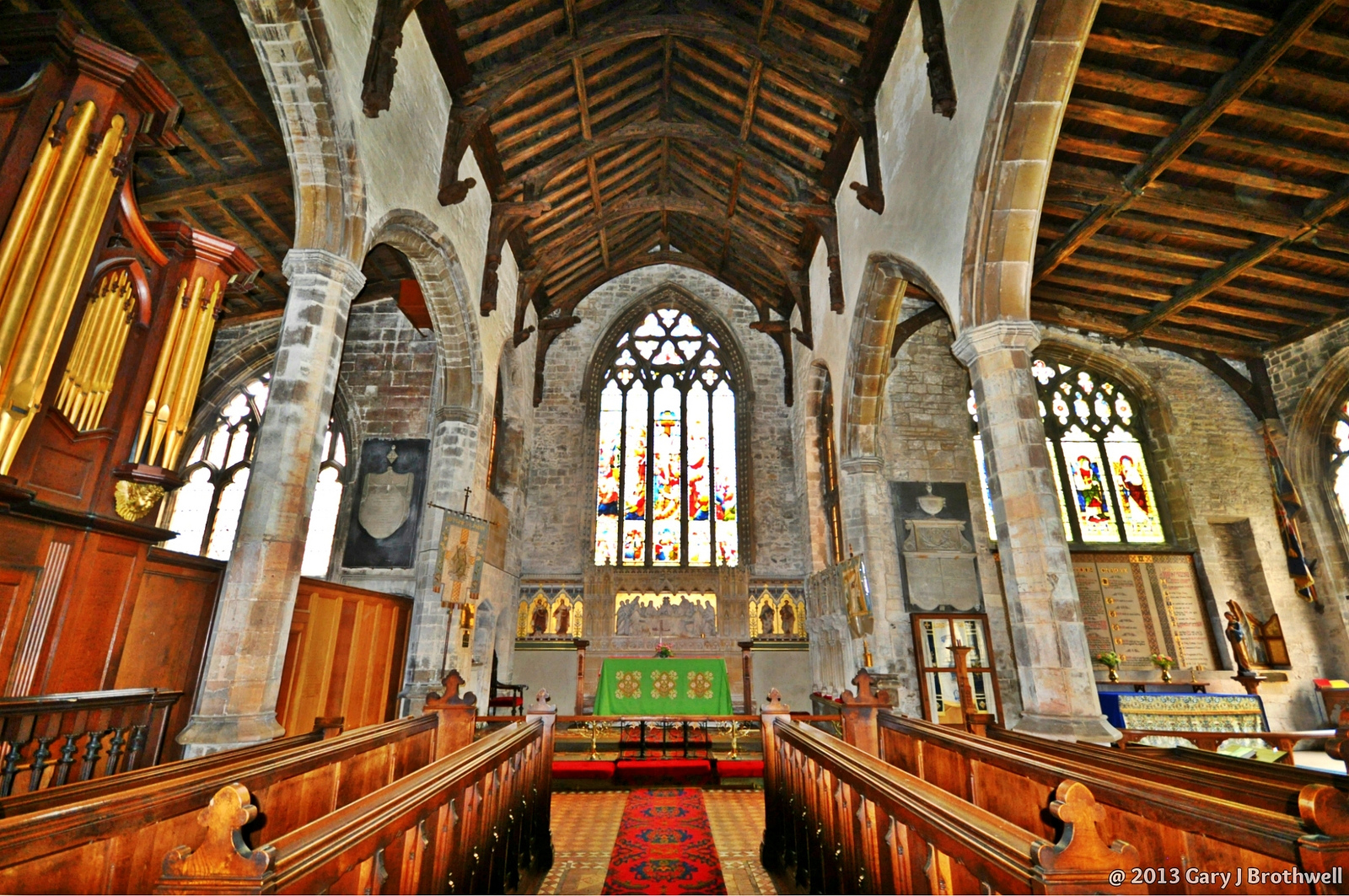
The parish church of St Mary in Long Sutton (Photo: Gary J Brothwell via Flickr)
Market Harborough
Built in the 12th century as a market town to promote local industry, Market Harborough has always had commerce running through its veins. Situated in Leicestershire, the town’s main hub of activity today is its bustling High Street, where independent shops, diverse restaurants and pubs attract a brisk trade.
One of the town’s most striking landmarks is the timber framed Old Grammar School which dates from 1614, while the nearby St. Dionysius Parish Church, with its towering steeple, can also be found in Market Harborough’s picturesque heart. Another popular attraction is Harborough Museum and Library, located in the Symington Building, an eye-catching Victorian-era former corset factory.
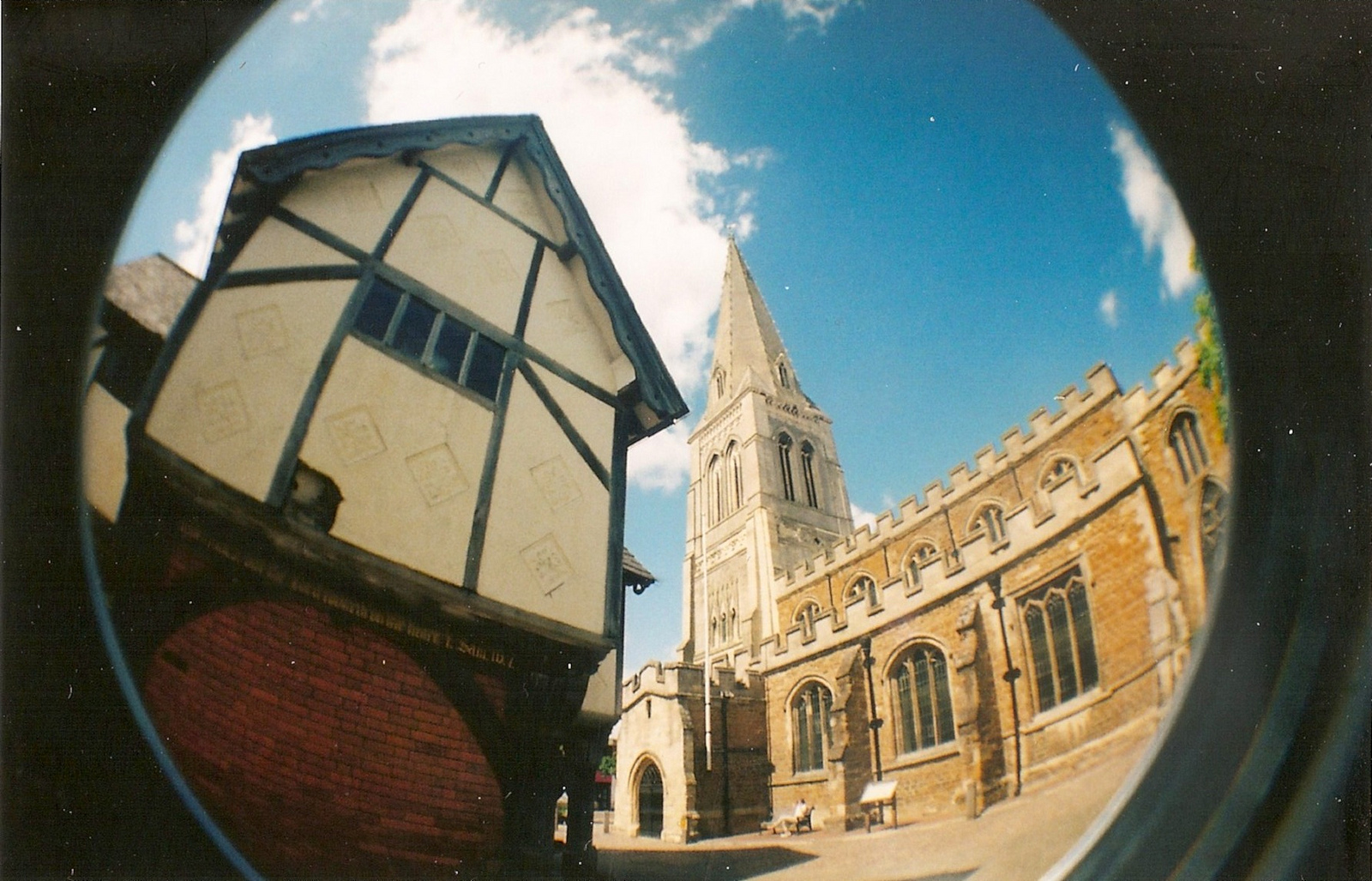
A fisheye view of the the old Grammar School and St Dionysus Church in Market Harborough (Photo: timfilbert via Flickr)
Oakham
The current holder of a coveted Britain in Bloom award, Oakham is a quintessential English market town located in the shire of Rutland. Packed with heritage, it is popular for day trips and short breaks, thanks to its scenic setting and impressive roll-call of historical attractions that serve as testimony to the town’s ancient roots.
Nothing demonstrates this better than the 200-plus horseshoes hanging from the walls of Oakham Castle, the legacy of a tradition that requires peers of the realm to forfeit a horseshoe to the Lord of the Manor of Oakham on their first visit to the town. Less reliant on folklore is Oakham School, housed in a beautiful 16th century building and one of the town’s most notable landmarks.
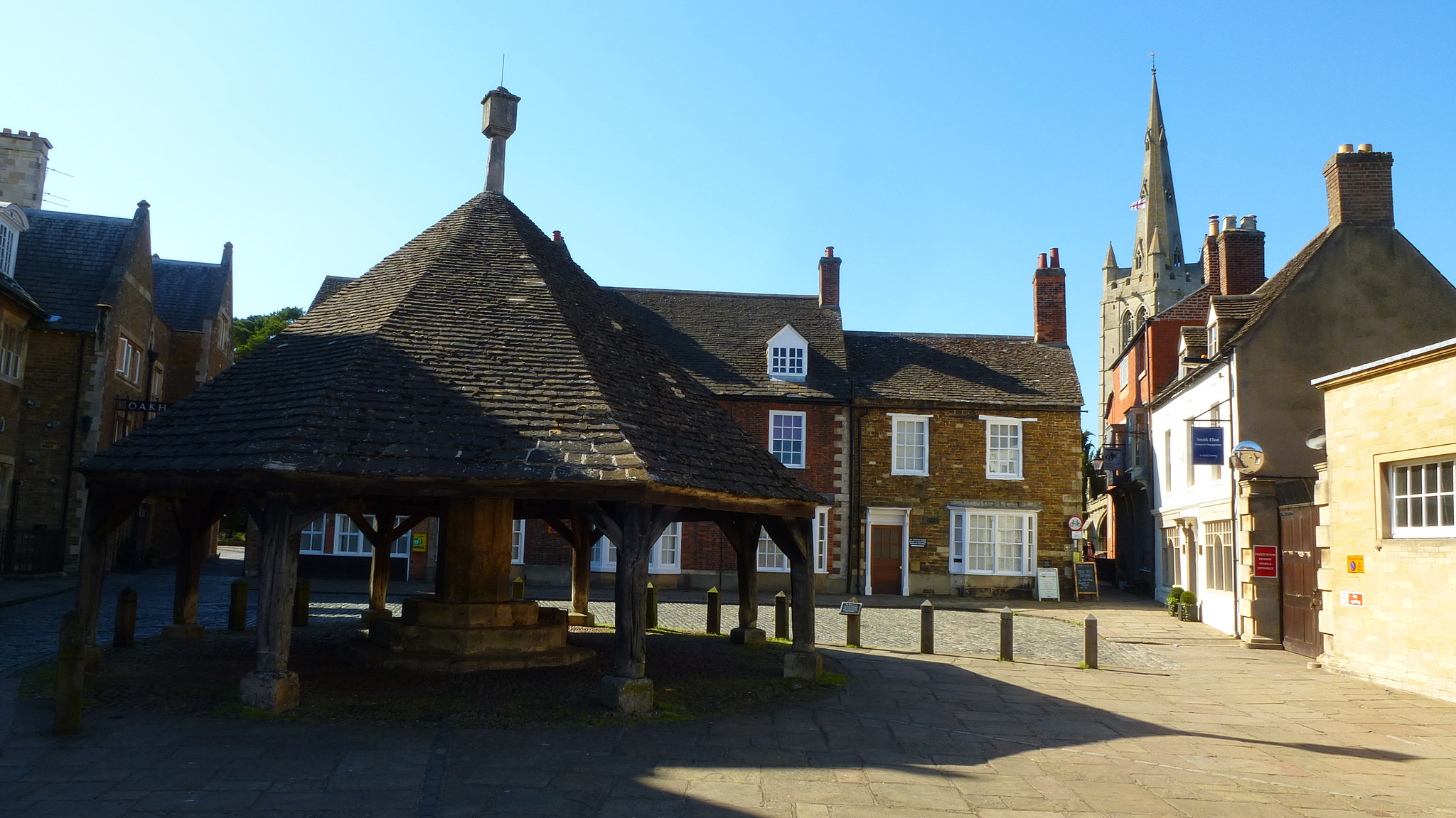
A view of a charming house-lined square in Oakham (Photo: Alan Feebery via Flickr)
Oundle
Encircled by the river Nene, the historic market town of Oundle in Northamptonshire has all the visual qualities you might expect from a glitzy period drama. Its streetscapes are dotted with Georgian town houses, 17th-century cottages and medieval gables, while limestone buildings add to the town’s character.
Laying on Oundle’s borders is Fotheringhay Castle, where Richard III was born and where Elizabeth I imprisoned and executed Mary Queen of Scots. Such harrowing history has evaporated, but its physical relics remain. A revered Public School plays its part in rearing the town’s future protégées.
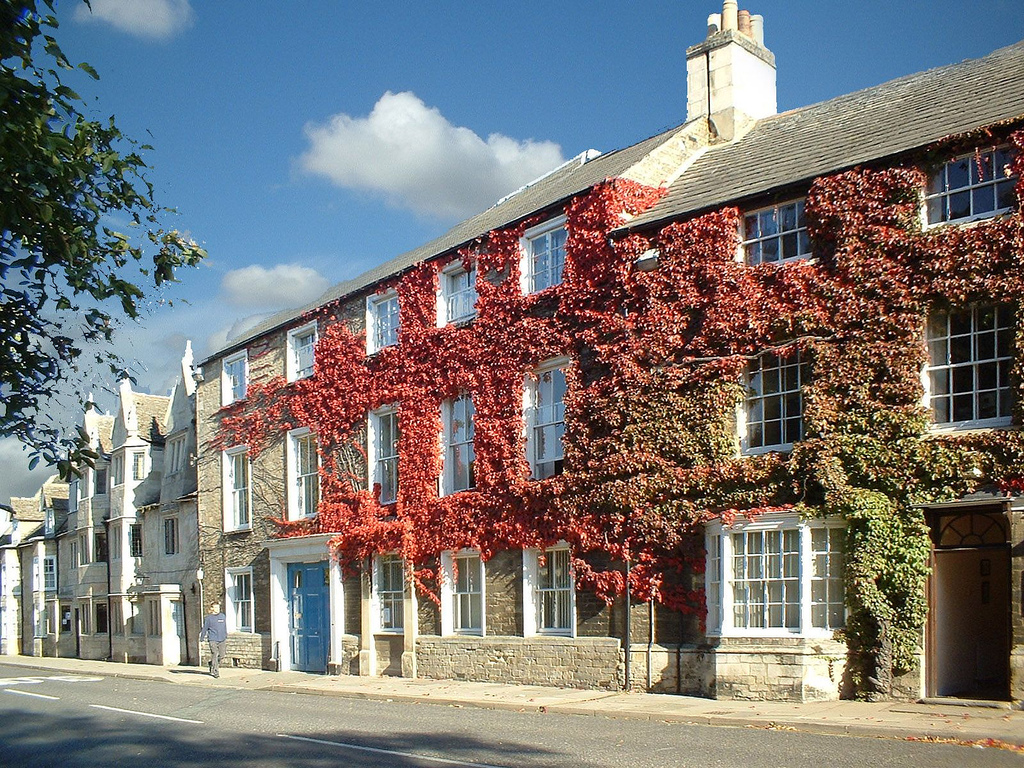
Ivy-clad terraced houses in Oundle (Photo: Martin Sutton via Flickr)
Stamford
Nestled on the River Welland in Lincolnshire, the bustling market town of Stamford was once proclaimed by the novelist Sir Walter Scott as “the finest stone town in England”. Such lofty praise would help ensure that 600 of its mellow limestone buildings gained listed status, including five medieval churches. Little wonder that it commands such curiosity.
Among the historical highlights are one of the oldest provincial theatres in England, the Steam Brewery, Browne’s Hospital’s and the 12th century ruins of St Leonard’s Priory. A popular Town Trail invites visitors to explore Stamford in methodical fashion, taking in its passageways, main thoroughfare and market squares.
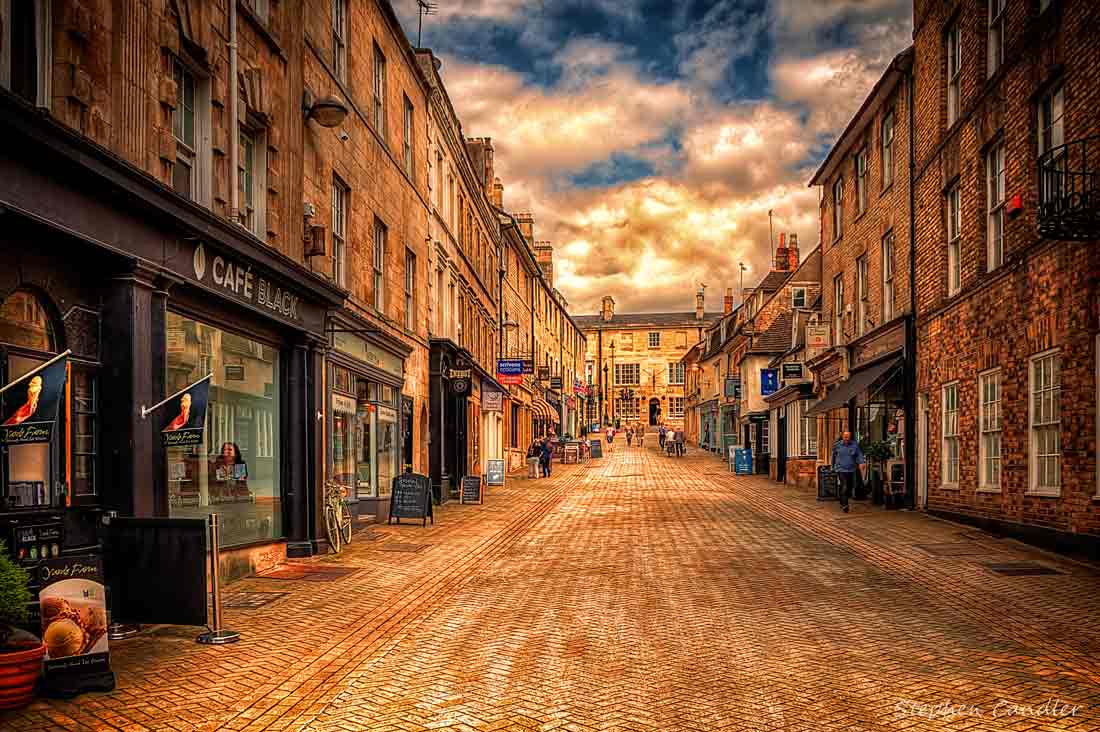
A pedestrianised street in Stamford (Photo: Light+Shade via Flickr)
Towcester
Once a thriving coaching route along an ancient Roman road, today Towcester is one of the East Midland’s most prosperous towns.At the heart of the Northamptonshire market town is Moat Lane, a multi-million pound regeneration development that includes a number of listed buildings, a scheduled ancient monument, water meadows and parkland. The restored Bury Mount, the site of a 12th century motte and bailey castle, sits as its centrepiece attraction.
Regeneration in Towcester has also seen the revival of a local Brewery, while the construction of a visitor centre, museum, shops, restaurants, cafes and bars are currently in progress. Towcester Racecourse hosts several prestigious horseraces throughout the year, attracting thousands of spectators to the town.
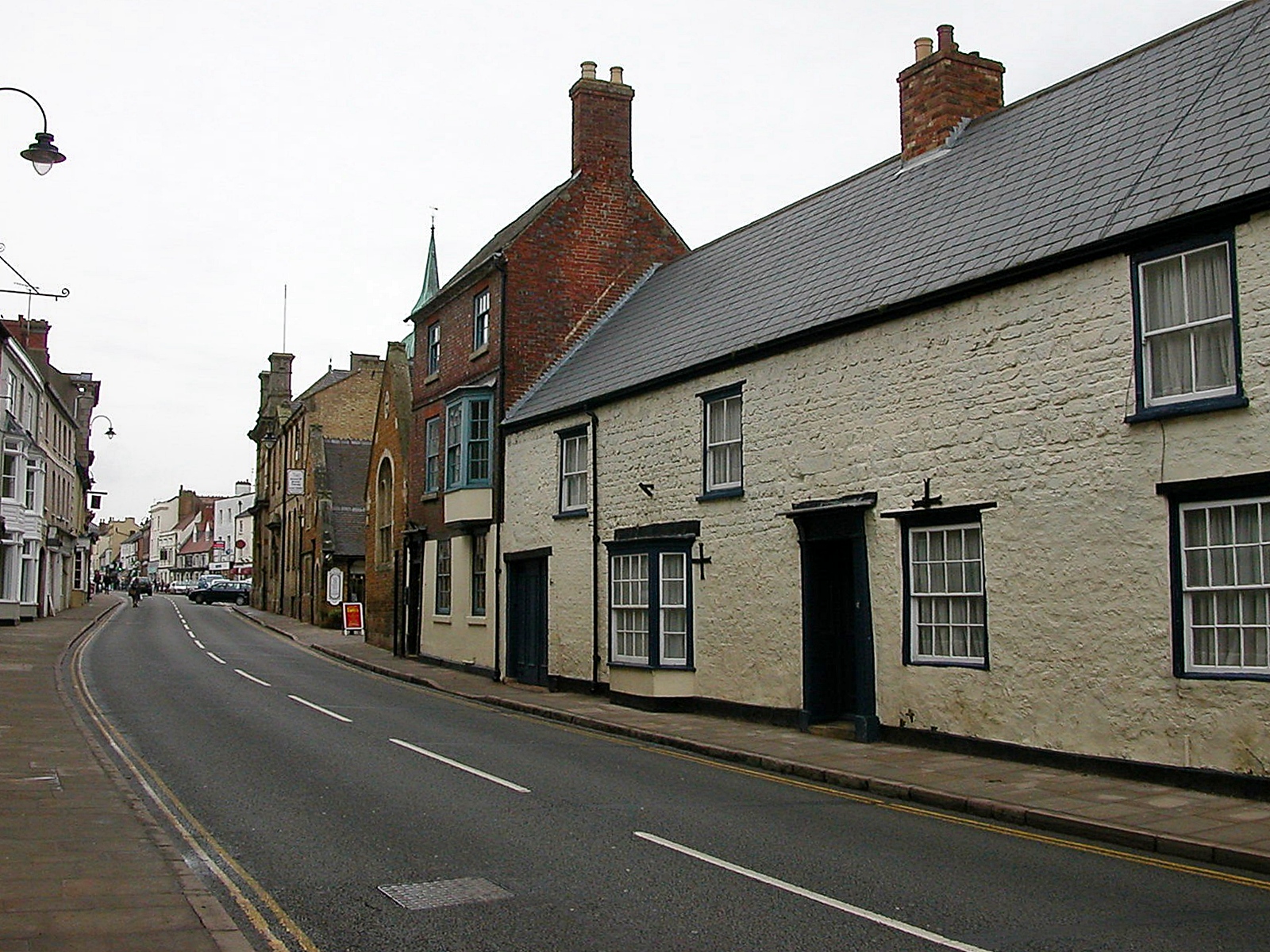
A street in Towcester town centre (Photo: Saxon Sky via Flickr)
Uppingham
The Rutland town of Uppingham has much in its favour, but it is its vibrant arts scene that sets it apart from many of its regional neighbours. Galleries are dotted everywhere, with works regularly trading hands for substantial sums. Historical curios also do a brisk trade here, with numerous antiques stores across the town. Needless to say, visitors often leave with more than they bargained for.
In keeping with its East Midlands counterparts, there’s plenty of architectural gems to admire too. The ubiquitous honey-coloured buildings are a delight, while the Church of St Peter and St Paul dating back to the 14th century stand as testament to the town’s long history.
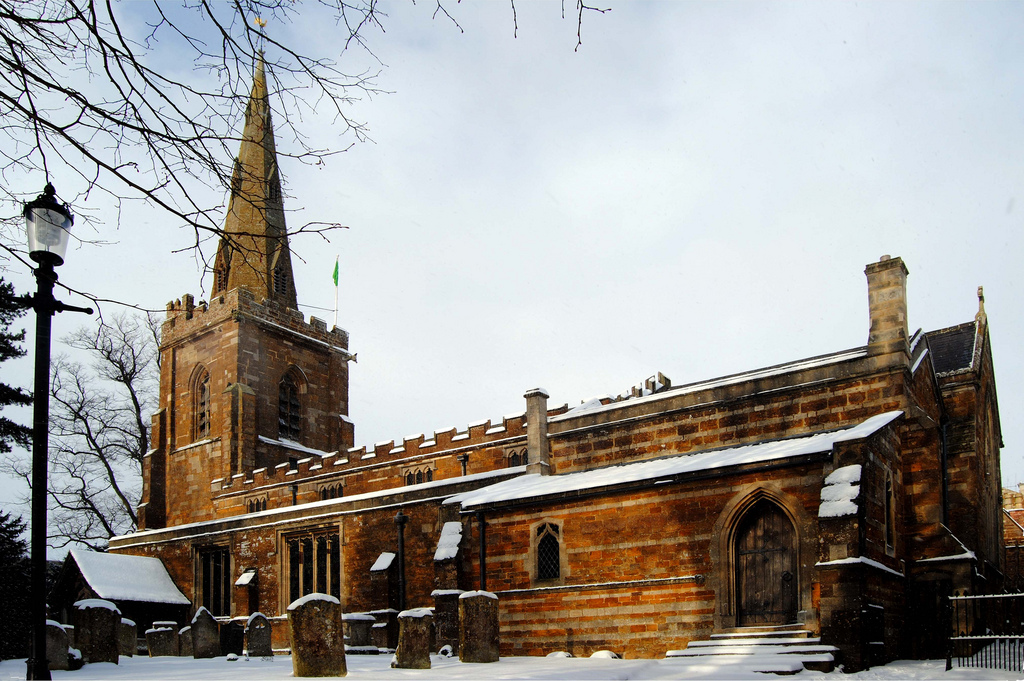
A snow-capped church in Uppingham (Photo: lawrjon1 via Flickr)